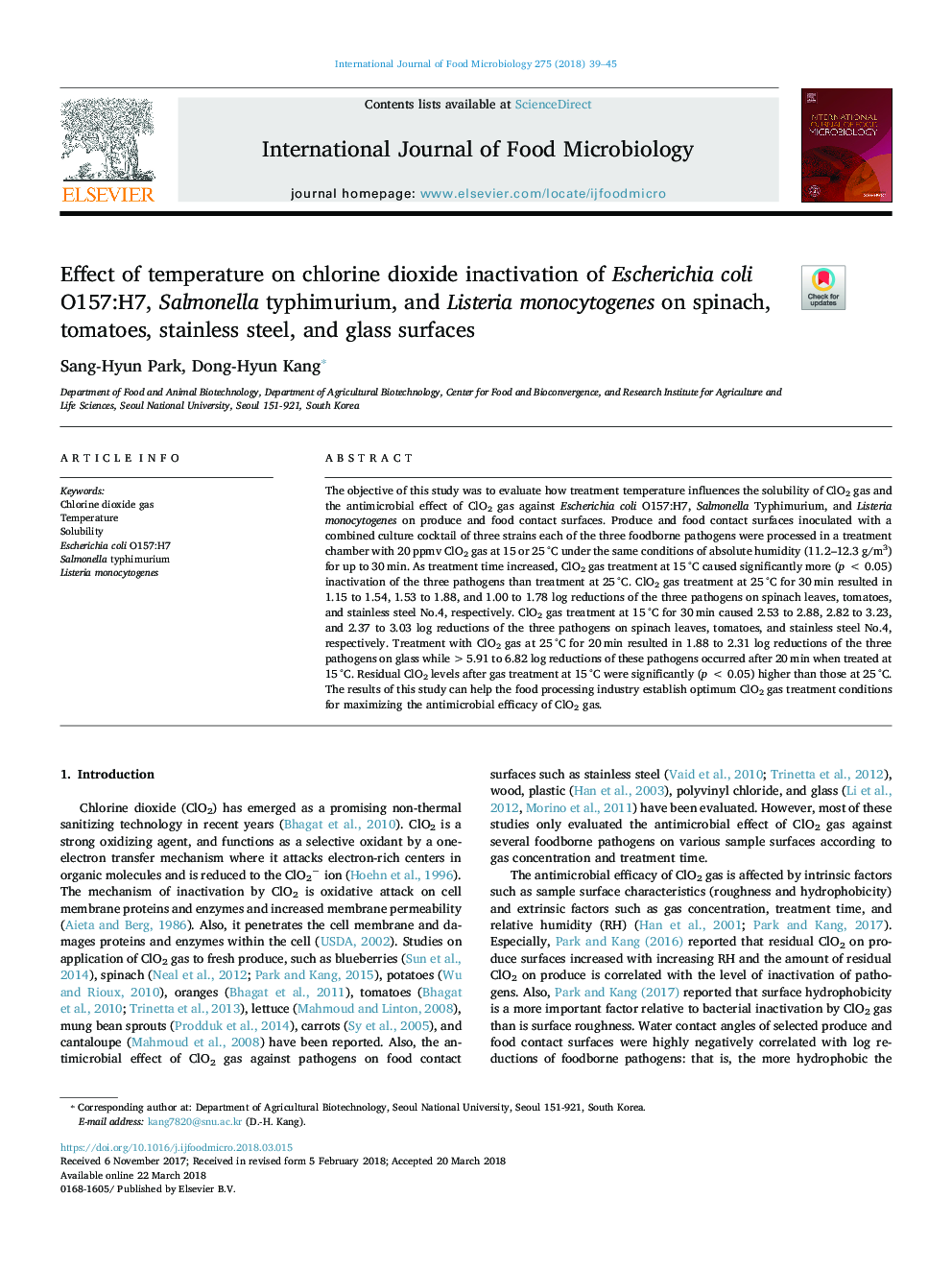| کد مقاله | کد نشریه | سال انتشار | مقاله انگلیسی | نسخه تمام متن |
|---|---|---|---|---|
| 8844200 | 1616508 | 2018 | 7 صفحه PDF | دانلود رایگان |
عنوان انگلیسی مقاله ISI
Effect of temperature on chlorine dioxide inactivation of Escherichia coli O157:H7, Salmonella typhimurium, and Listeria monocytogenes on spinach, tomatoes, stainless steel, and glass surfaces
دانلود مقاله + سفارش ترجمه
دانلود مقاله ISI انگلیسی
رایگان برای ایرانیان
کلمات کلیدی
موضوعات مرتبط
علوم زیستی و بیوفناوری
علوم کشاورزی و بیولوژیک
دانش تغذیه
پیش نمایش صفحه اول مقاله

چکیده انگلیسی
The objective of this study was to evaluate how treatment temperature influences the solubility of ClO2 gas and the antimicrobial effect of ClO2 gas against Escherichia coli O157:H7, Salmonella Typhimurium, and Listeria monocytogenes on produce and food contact surfaces. Produce and food contact surfaces inoculated with a combined culture cocktail of three strains each of the three foodborne pathogens were processed in a treatment chamber with 20â¯ppmv ClO2 gas at 15 or 25â¯Â°C under the same conditions of absolute humidity (11.2-12.3â¯g/m3) for up to 30â¯min. As treatment time increased, ClO2 gas treatment at 15â¯Â°C caused significantly more (pâ¯<â¯0.05) inactivation of the three pathogens than treatment at 25â¯Â°C. ClO2 gas treatment at 25â¯Â°C for 30â¯min resulted in 1.15 to 1.54, 1.53 to 1.88, and 1.00 to 1.78 log reductions of the three pathogens on spinach leaves, tomatoes, and stainless steel No.4, respectively. ClO2 gas treatment at 15â¯Â°C for 30â¯min caused 2.53 to 2.88, 2.82 to 3.23, and 2.37 to 3.03 log reductions of the three pathogens on spinach leaves, tomatoes, and stainless steel No.4, respectively. Treatment with ClO2 gas at 25â¯Â°C for 20â¯min resulted in 1.88 to 2.31 log reductions of the three pathogens on glass while >5.91 to 6.82 log reductions of these pathogens occurred after 20â¯min when treated at 15â¯Â°C. Residual ClO2 levels after gas treatment at 15â¯Â°C were significantly (pâ¯<â¯0.05) higher than those at 25â¯Â°C. The results of this study can help the food processing industry establish optimum ClO2 gas treatment conditions for maximizing the antimicrobial efficacy of ClO2 gas.
ناشر
Database: Elsevier - ScienceDirect (ساینس دایرکت)
Journal: International Journal of Food Microbiology - Volume 275, 20 June 2018, Pages 39-45
Journal: International Journal of Food Microbiology - Volume 275, 20 June 2018, Pages 39-45
نویسندگان
Sang-Hyun Park, Dong-Hyun Kang,